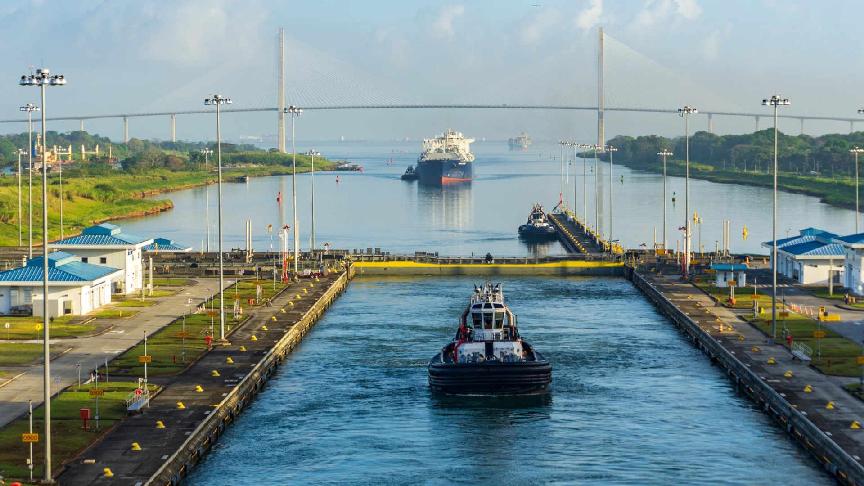7 June 2024 (Lloyd's List) - AFTER significant rebounds in February-April, Panama Canal transits levelled out in May, according to data released Thursday by the Panama Canal Authority (ACP).
The ACP recorded 805 transits in May*, up 2% from April. However, with one more day in May than April, transits per day came in at 25.97, down 1.3% from the previous month.
There were 7.55 transits per day via the neo-panamax locks, up 2% month on month, and 18.42 transits via the panamax locks, down 2.5%.
There is still a long way to go for the waterway to return to normal.
Total transits per day were down 20% year on year in May, with daily voyages through the neo-panamax locks down 14% and those through the panamax locks down 23%.
Compared with May 2022, last month’s transits per day were down 27%, with neo-panamax transits down 18% and panamax transits down 30%.
Containerships boost neopanamax locks transits
There were 234 total transits through the neo-panamax locks in May, 12 more than in April.
Neo-panamax containership transits were up 14% compared to the month before, while transits of larger liquefied petroleum gas carriers (VLGCs) were down 11%. Liquefied natural gas carrier transits remained minimal, with just five LNG carriers using the waterway last month versus only one in April.
The trend for larger containerships in the Asia-US east coast trade has been a bright spot for the canal.
Traffic of larger containerships is now almost back to where it was in October, prior to severe restrictions put in place in November because of low water levels. There were 159 neo-panamax containership transits in May (more than any other ship type in either lock system), just five less than in October, and 35% above the low hit in January.
Smaller LPG carrier transits support panamax locks transits
The panamax locks handled 571 transits in May, essentially flat (up four transits) from the month before.
A surge of smaller LPG carriers came through these locks last month, with transits up 51% versus April, according to ACP statistics. Panamax LPG carrier transits are now well above pre-restriction levels (80 in May, 62 in October).
Dry bulk carrier transits rose 20% month on month, although this segment is still depressed compared with pre-restriction levels (94 in May versus 164 in October).
According to brokerage BRS, “Looking into the second half, we expect Panama Canal bulker transits to increase, although it might take some time — toward the end of the year — before numbers can fully rebound to historical averages.”
A rebound in Panama Canal usage by bulkers could be “a potential second-half curveball” for the sector, said BRS, noting that the bottleneck has been positive for rates. “Shipowners and operators have benefitted… as supply has tightened” due to restrictions.
In other shipping segments, declines in panamax locks transits for crude tankers, product tankers and refrigerated cargo carriers offset May’s month-on month gains for smaller LPG carriers and bulkers.
Gatun Lake water levels up versus 2023, still down versus 2022
On May 30, the ACP announced it had increased maximum authorised draught to 13.7 metres two weeks ahead of schedule.
The ACP hiked the number of daily panamax transit reservation slots from 17 to 24 on May 15, and increased neo-panamax reservation slots from seven to eight on June 1, bringing total daily slots to 32 (past months’ data confirms that actual daily transits can be less than total available reservation slots).
The Gatun Lake water level is rising — up 0.4 m from the recent low hit on April 23 and up 0.7 m from the current drought low reached on July 25, 2023.
But there is still a sizeable gap between the current level and the circa-2022 “normal”. While the ACP has touted the fact that water has exceeded 2023 readings since May 26, last year’s water level was already low by that time.
The Gatun Lake water level was 24.8 m as of Wednesday, up 0.5 m year on year but still down 1.4 m from the same day in 2022.
* The ACP does not release monthly transit statistics by segment or statistics on total monthly transits. It releases fiscal-year-to-date transits by segment and fiscal-year-to-date total transits since October, the beginning of its fiscal year. Lloyd’s List calculates monthly transits by comparing each month’s cumulative fiscal-year-to-date statistics







